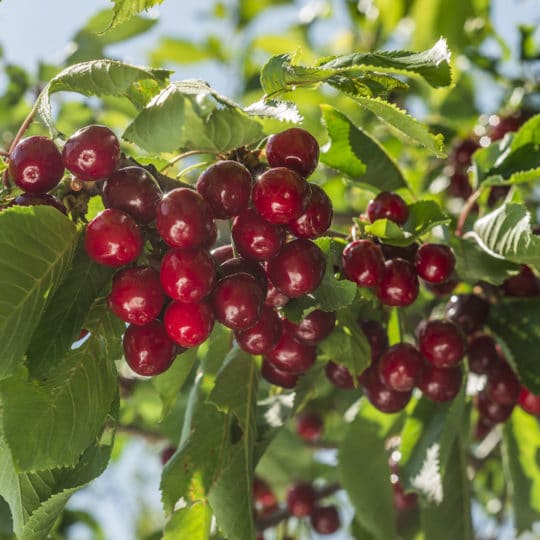Identifying Black Knot
And What to do About it
Posted
February 7, 2019

If you have a plum, cherry, apricot, or chokecherry tree, you may already be familiar with black knot. But do you know what to do about it? Read on to find out.
What is Black Knot
Black knot is a fungal disease that’s more commonly found on different fruiting and ornamental trees—especially plum and cherry. You’ll know it by its hard, uneven, black galls that wrap around twigs and branches. But this is when it’s already developed. It can take a whole season before it starts showing any signs or spores. Once it does it’s already in the process of strangling new growth and attracting pests and disease.
The disease spreads easily during damp spring-like conditions. Depending on the wind and weather, it can travel throughout the tree or to its neighbor. Early signs include small, olive-colored swellings during the first season. These may be hidden by leaves, so you should watch disease-prone plants carefully. Over time, the swells get darker and expand during the second year, especially in humid weather.
Once the swells grow to become dark warts that coil along stems and branches, pruning and chemicals may not be enough to save the plant. The best way to control black knot is to catch it in the early stages before it becomes dark and established.
How to Control Black Knot
Pay close attention to your fruit trees and watch for any signs of disease throughout the year—especially in winter when all the leaves are gone. Look for cracks, discoloration, swelling, or other signs of infection around twig and leaf axils. Carefully remove the infected areas. Cut four to eight inches past the galls to ensure it’s all removed. Use a pruning knife or chisel to remove galls on trunks and cut down the entire infected branch. Burn or bury the pruned wood, being careful not to let any spores escape to live on the ground. Thorough clean any pruning tools after use to help prevent spreading disease.
If you catch black knot soon enough, a quick pruning and careful disposal of the gall-infected branches may save the tree. But you should keep an eye out for other signs of spreading. Organic treatments can also help and are better than using harmful chemicals around your fruit.
Understand that some varieties of tree and shrubs are more susceptible to the disease than others. Choose your plants accordingly. If you live in a highly damp and humid environment where the fungus is more likely to grow, these are probably not the plants for you—unless you can grow them in a more climate-controlled space. Talk to your local nursery staff to see which varieties do best in your area.